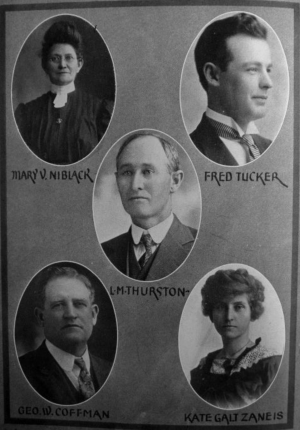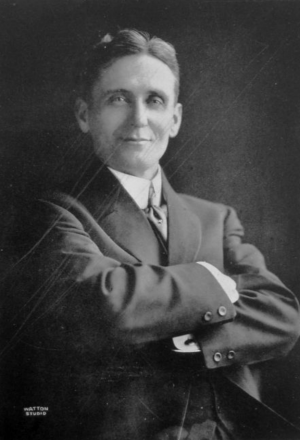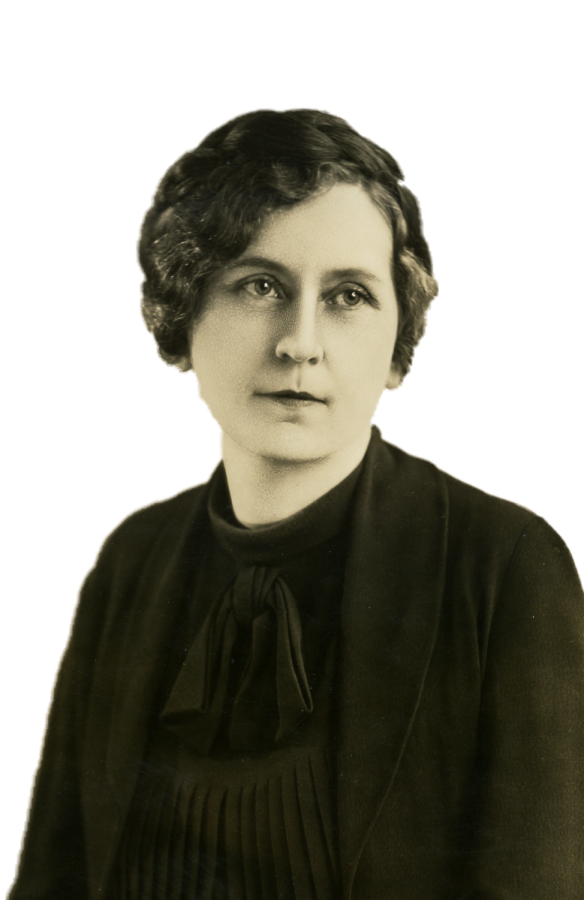First female president of four year college shapes history
By Courtesy of 9703, William Finney Collection, OHS
Kate Galt Zaneis was the first woman to serve as president of a public four-year college in the history of the United States.
May 20, 2021
In May of 1935, national history was made at what is now Southeastern Oklahoma State University. Kate Galt Zaneis was appointed president of what was then known as Southeastern Teachers College, making her the first woman to serve as president of a public four-year college in the United States.
Southeastern Oklahoma State University first opened its doors to students on June 14, 1909 as Southeastern State Normal School. In 1921, the institution became a four-year college and was renamed Southeastern State Teachers College. In 1939, the purpose of the college expanded and degrees were added; the name was then changed to Southeastern State College. In the early 70s, a comprehensive plan was submitted to the Oklahoma State Regents for Higher Education. The plan was approved and the changed for the final time to Southeastern Oklahoma State University by an act of the Oklahoma State Legislature.
Zaneis is the first of only five women in Oklahoma’s higher-educational history to take on the role of president.
Early Years
Born on Feb. 17, 1887 in Spring Place, Ga., Zaneis was an educator at heart. When she was young, she would play school with her siblings and always played the teacher— never the student. If she could not be the teacher, she sat out until she was able to do so.
Zaneis attended high school in Ardmore, Okla., and served as the high school librarian due to the school not being able to afford a professional one. She was also the editor of the school newspaper and loved participating in theatre. Zaneis was a hard-working student and in the top of her class.
After graduation, Zaneis was immediately given an opportunity to teach full-time at Lincoln Ward High School in Ardmore. From there, she would take multiple positions at the school including teacher, principal and even janitor over the span of several years.
In 1915, she was offered the position of superintendent of Lone Grove High School.

In addition to being a superintendent, Zaneis was offered another job by Henry G. Bennett to be a visiting teacher at Southeastern State Normal School during the summer semester in 1917. In 1920, shortly after completing her first semester, she strived to take part in educational reform in Carter County.
While also taking the position of Superintendent of Public Instruction for Carter County, Zaneis was one of five members apart of the Citizen’s Committee on Education for Remedial Legislation. The committee strived to make changes in school laws and constructional conditions of schools throughout Oklahoma.
Zaneis also started the school lunch programs that proposed training for feeding procedures at Oklahoma A&M, now known as Oklahoma State University. She was able help a total of 13 schools in the area. One of which was named in her honor and opened in November 1921.
After graduating with her bachelor’s degree from Southeastern in 1926, she joined the Oklahoma Education Association and gave speeches on educational topics. In 1934, when the Great Depression affected how teachers were paid, she gave a speech on the injustice of it all.
This speech would define a major turning point in her life.
The speech was so well done that E.W. Marland took notice. Marland was campaigning to be governor of Oklahoma, and once Zaneis stated in her speech that she fully supported his efforts, he asked her to be his campaign manager.
When Zaneis was asked what she wanted if Marland won the election, her response was to be president of Southeastern.
Just six months later, after graduating with her master’s degree from Oklahoma A&M, Zaneis was appointed to serve as president of Southeastern on May 24, 1935.
At Southeastern
During her presidency, Zaneis committed to many changes at the university— some were considered successful and others controversial.
Among her more controversial changes, she appointed the dean position to her favorite professor, Dr. Everett Fixley, and fired all faculty that did not have master’s degrees. She also cut the income of higher-paid men to match the income of female faculty.
Even amongst controversy, Zaneis had several successes in her presidency. She secured funds through the Public Works Administration to help improve construction on buildings and athletic fields on campus. Additionally, enrollment was increased by 30 percent. Student work programs at the college were funded and improved as well.
She even procured an appearance at Southeastern by first lady Eleanor Roosevelt on March 18, 1937, where spoke to a “packed auditorium of young people.” First lady Roosevelt even wrote a diary entry dated March 20, 1937 where she mentioned Zaneis.
First lady Roosevelt mentioned how warmly Zaneis welcomed her into her home and what they did during her visit. “We stood in President Zaneis’s office and received somewhere around 2,300 people. I rarely do this, but it is also rare for a woman to be a president of a college where there are both men and women students,” she stated in her diary entry.
Despite Zaneis’s successes and heightened influence at Southeastern, her presidency did not last long.
Due to her controversial actions upsetting the townspeople and the men of the faculty, the State of Board Education fired Zaneis in May 1937. Some speculate that her firing was primarily because of her gender.

Despite her termination, she continued to work in her chosen field. She became the director of education for the Oklahoma Department of Public Safety and continued to work on the school lunch program for the state.
Zaneis died on Sept. 9, 1973 at Ardmore Memorial Hospital.
Her Impact
Zaneis fought for what she believed in no matter the risk and was not afraid to stand up for what was right. Her mentors throughout her life also had a hand in her determination and strong will— one being Charles Evans, a Carter County superintendent and the person who gave her a teaching job directly after she graduated high school.
Evans believed in her aspirations and skills early on and was someone who gave her the step she needed to move forward in her career. He not only believed in her teaching skills, but her leadership skills as well.
“Teachers are born and not made, and Kate Galt was one of those who was born to lead,” Evans said.
Zaneis remains to be a historical, powerful and influential figure to all women, educators and students alike.


